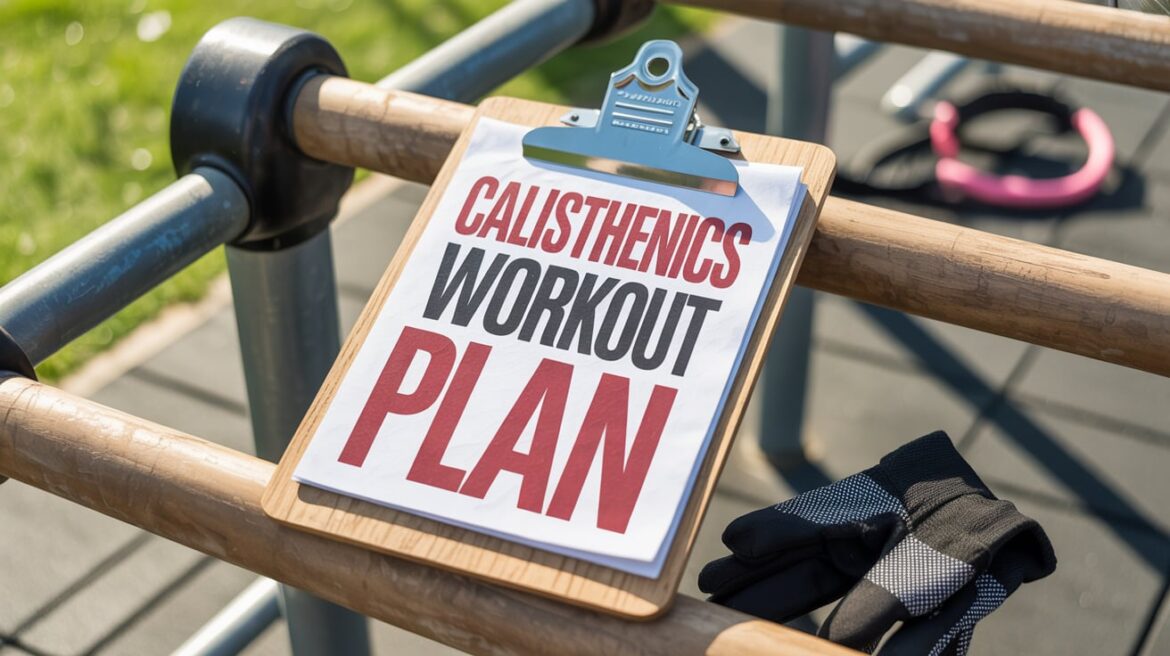Introduction
Calisthenics (from the Greek words “kallos” meaning beauty and “sthenos” meaning strength) is a training regimen primarily based on variations of bodyweight resistance exercises.
Rather than following traditional resistance training protocols with the systematic use of barbells or machines, calisthenics promotes musculoskeletal development using biomechanically optimal movement patterns.
The exercise and workout regimen discussed here follows the principles of progressive overload, neuromuscular control, and structural efficiency, and is applicable to both sedentary populations, and advanced strength athletes.
This content matches models of physiologic adaptations, along with optimizing the integrity of the kinetic chain and considering the sustainability of long-term training.
Who Should Use This Plan (Target Audience)
Calisthenics training plans can be suitable for several categories of populations:
Individuals without access to a conventional gym infrastructure
Trainees seeking neuromotor precision and proprioceptive improvement
Subjects with contraindications to heavy external load bearing
Athletes requiring scalable training protocols during rehabilitation or off-seasons
The planning model includes variations and progression paths for novice, intermediate and advanced users, with the suitable volume and intensity standards for each user and experience level.
Why Choose Calisthenics Versus Weightlifting?
Mechanical Efficiency and Movement Integration
Calisthenics promotes compound kinetic motion along with a great deal of engagement of more than one joint structure. This supports functional biomechanics and reduces isolated overuse injuries frequently associated with machine-based resistance systems.
Energy Expenditure and Conditioning Profile
The review indicates that calisthenics engenders greater total energy expenditure than resistance training due to its multi-planar recruitment patterns and because reduced rest intervals accentuate cardiovascular conditioning and adipose tissue reduction.
Neuromuscular Load Progression
Progressive difficulty may be determined by body position, limb leverage, and tempo-inciting greater loads without the utilization of an extrinsic device. This clearly fulfills overload requirements for hypertrophy and strength gains.
Key Principles of an Effective Calisthenics Workout Plan
Progressive Overload Without Equipment
Increase in number of repetitions.
Change movement tempo.
Optimizing range of motion.
Change lever length.
Load transition from bilateral to unilateral. (Differential unilateral loading.)
Planning for Volume, Frequency and Recovery
Frequency: Intermediate volume should be done 3-5 times a week.
Volume: 3-5 sets of 6-12 reps for each movement.
Rest intervals: Based on intensity 30-90 seconds.
Training cycle: Linear or undulating periodization based on phase.
Warm-Up and Prevention of Injury
Structured warm-up routines that focus on joint articulation and core temperature elevation reduce injuries. Attention is given to the active mobility drills and low-intensity compound movements.
Recovery and Load Management
Active recovery, soft tissue mobilization, and sleep hygiene all synergize to support endocrine homeostasis and promote muscular repair times.
Baseline Assessment and Structuring Your Plan
Functional Baseline Screening:
Core engagement tests: e.g., hold time for the plank
Mobility assessment: ex. shoulder flexion, hip hinge (range)
Strength benchmarks: push-up capacity, squat capacity, pull-up capacity
Hypothetical Periodization:
Strength Low volume, High tension: Slow eccentric holds
Endurance: High-rep protocols with minimal rest
Skill acquisition: High frequency, submaximal intensity
Week-to-Week Structuring:
Linear: For progressive overload, volume is increased gradually.
Undulating: Intensity levels are alternated for every session to prevent plateaus.
Core Calisthenics Exercises to Stitch Into Your Regimen
Beginner-Level Exercises
Push-ups (knee and incline)
Assisted Pull-ups (band-supported)
Squats (free, wall-supported)
Glute Bridges
Static Plank
Intermediate Exercises
Elevated Push-ups
Full Pull-ups or Inverted Rows
Bulgarian Split Squats
Hanging Leg Raises
Pike Push-ups
Advanced Progressions
Muscle-ups
Pistol Squats
Planche Leans
Front and Back Levers
Handstand Push-ups
Conditioning Enhancements
High-rep Burpees
Jump Squats
Mountain Climbers in Tabata Protocol
Sample Workout Plans
3-Week Progressive Kick-start Plan
Week 1
Emphasis: Movement familiarization, form calibration
Reps: 2–3 sets of 8–10
Focus: Push-ups, bodyweight squats, static holds
Week 2
Emphasis: Lever length progression starts here
Reps: 3–4 sets of 10–12
Focus: Incline push-ups, wall sits, active core stuff
Week 3
Emphasis: Circuits and Time-under-tension
Reps: AMRAP protocols, 30-second holds
Focus: Supersets of push–pull and leg–core blocks
Upper/Lower Split (4 days/week)
Day 1: Push (push-ups, dips, pike push-ups)
Day 2: Pull (rows, pull-ups, biceps tuck holds)
Day 3: Legs (pistol squat progression, wall sits)
Day 4: Core and Mobility (planks, rotations, scapular movement)
Skill-Based Progression (Goal-Setting in Advanced Calisthenics)
Movement Skill Trees
Handstand: Wall support → freestanding → push-up variations
Planche: Tuck planche → advanced tuck → straddle
Muscle-up: Jump assist → strict concentric reps
Working through Drills
Frequency: 3x/week for a focus on the particular skill
Repetition: Low-volume, high-focus reps (e.g., 3–5 reps per drill)
Recovery: 2 to 3 minutes of rest for CNS adaptation
Tools and Resources
Applications for Structured Planning
Thenx
Caliverse
Madbarz
DIE RINGE (modular training blocks)
Minimal Equipment Recommendations
Pull-up bar (doorframe or freestanding)
Resistance bands (variable tension)
Parallettes
Gymnastic rings (for instability work)
FAQ’s
How soon will the results show?
Neuromuscular control adaptation can appear as soon as two to three weeks, while apparent hypertrophy requires, on average (with the condition of recovery and nutrition protocols observed), several weeks of application and consistent stimulus – roughly eight to twelve weeks.
Is hypertrophy achievable in calisthenics the same as weight training?
Yes, hypertrophy is possible due to the normal benefits of tension, repeated overload, and movement variability for adaptation, while leveraging lever mechanics provides greater mechanical loading and a larger sarcoplasmic response.
Do workouts without equipment work?
Yes, bodyweight-based resistance can generate significant training stimulus due to advanced pattern scaling, extensive stability requirements, and tempo variation alone which is very challenging!
What would you recommend for someone who would be deemed an injury concern?
Partial ROM, regression exercise, and rest in-between sets, and repeat will help mitigate associated injury complications while still allowing for training stimulus to occur!
Should I do cardio while I do calisthenics?
If you have conditioning goals and want to incorporate concurrent aerobic training you can; however, highly-structured rep-based circuit training with sets from a calisthenics protocol will use your cardiovascular system as a force.

